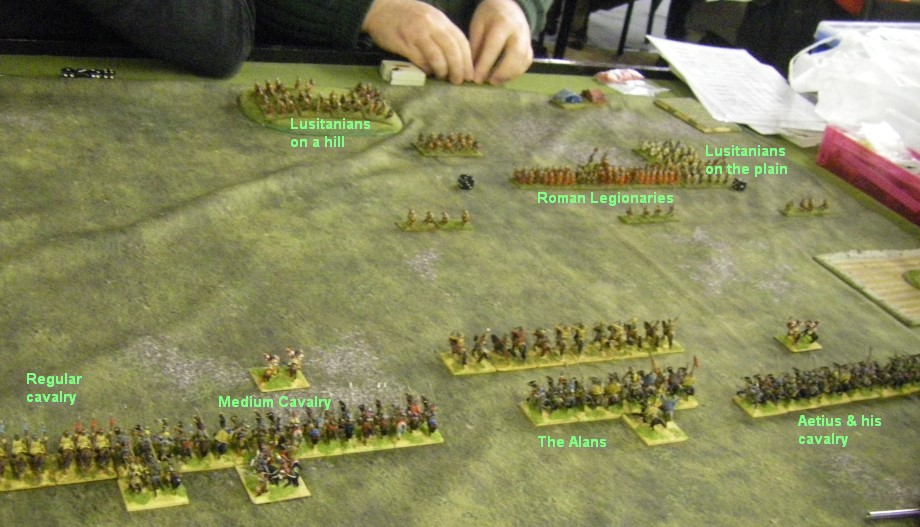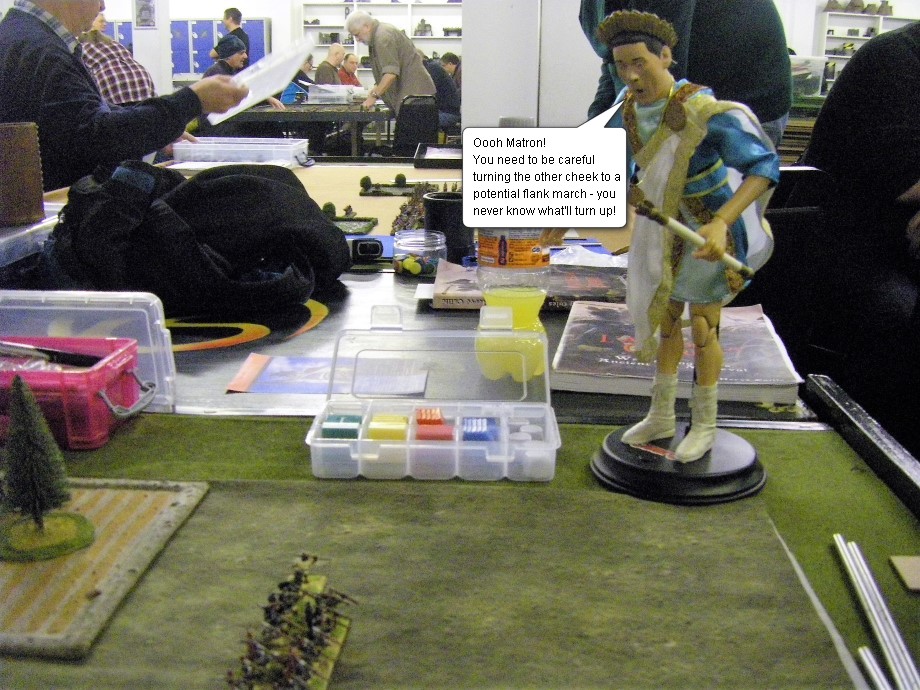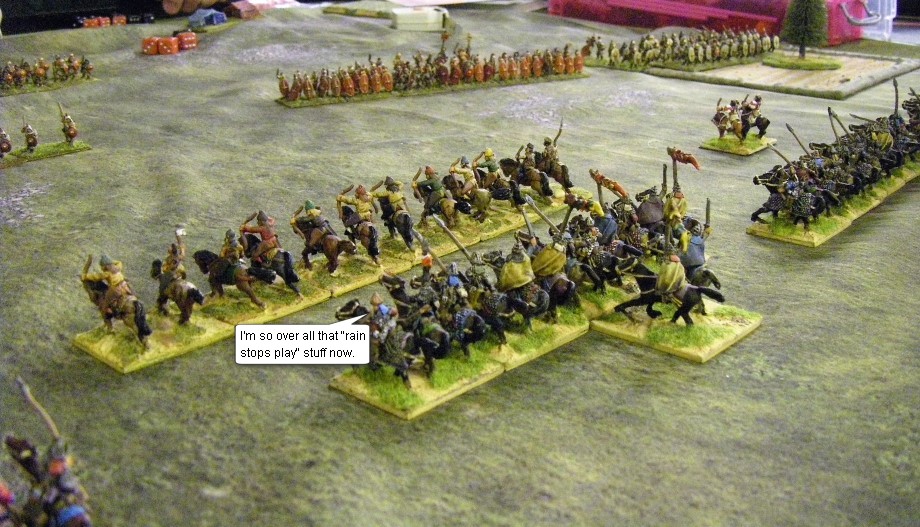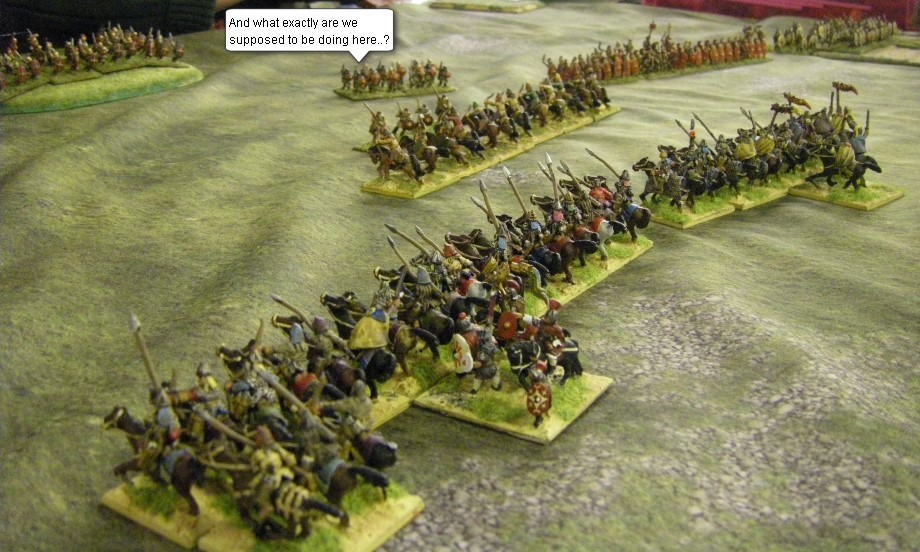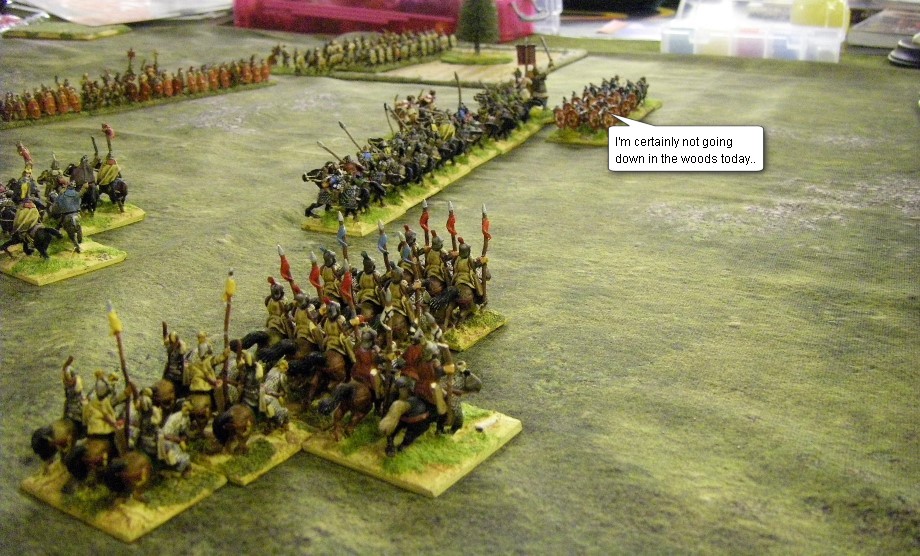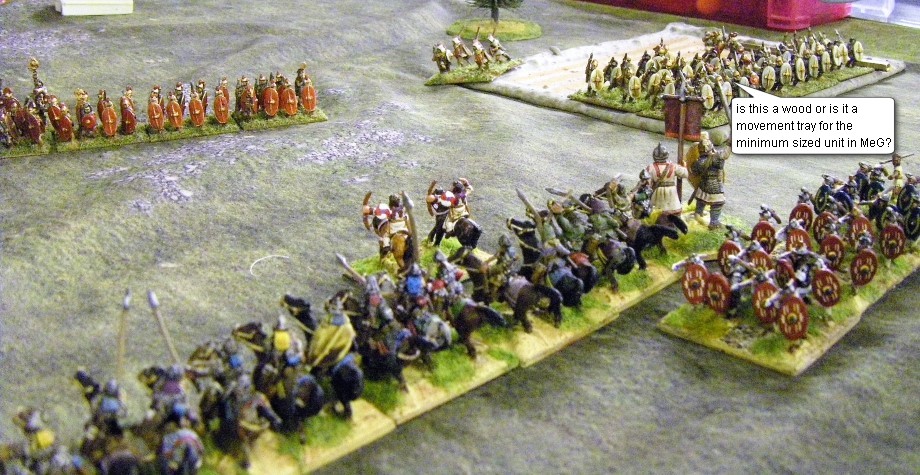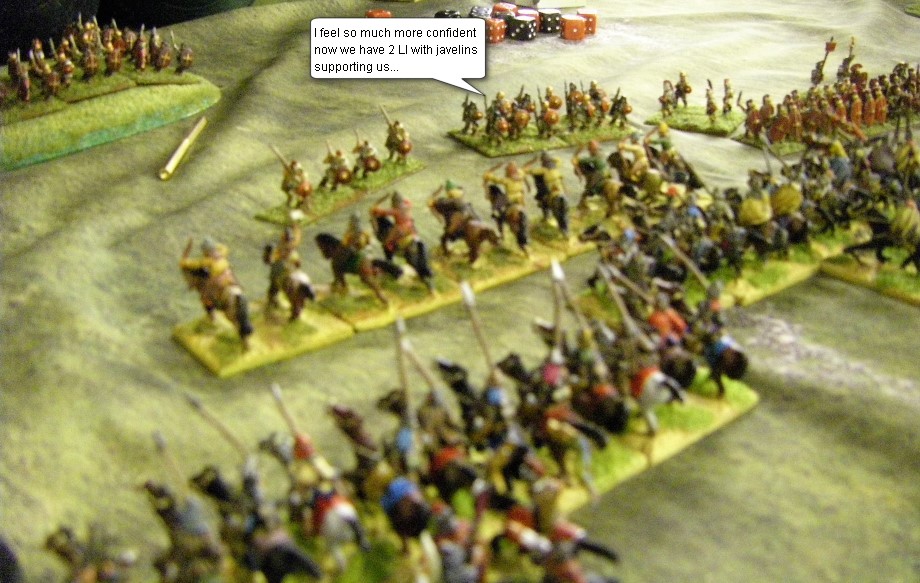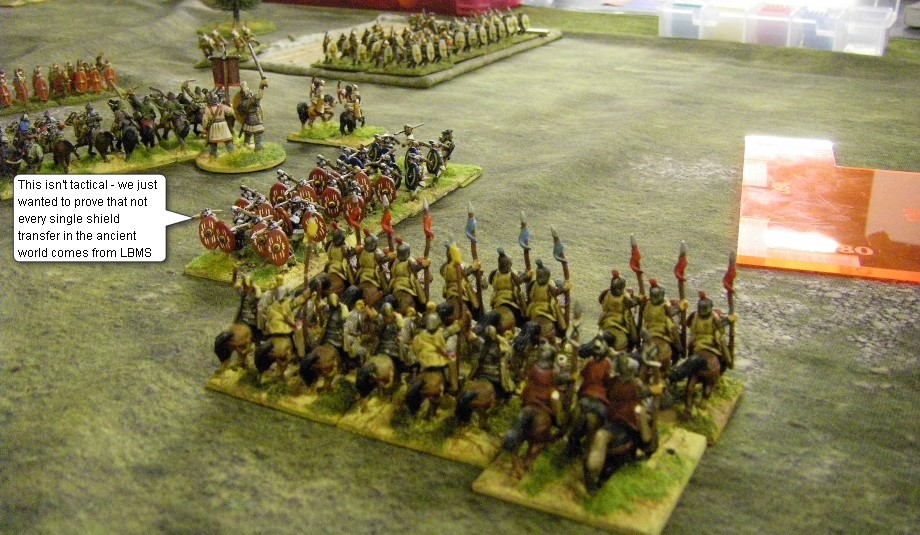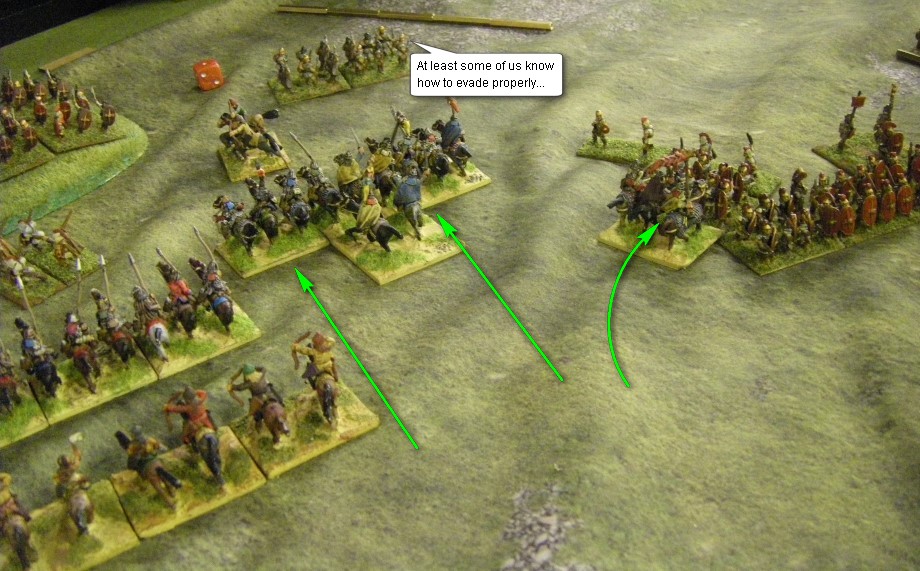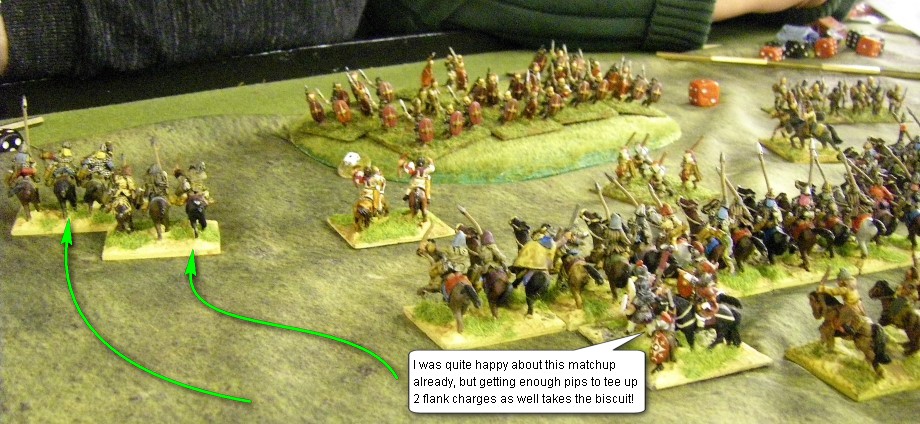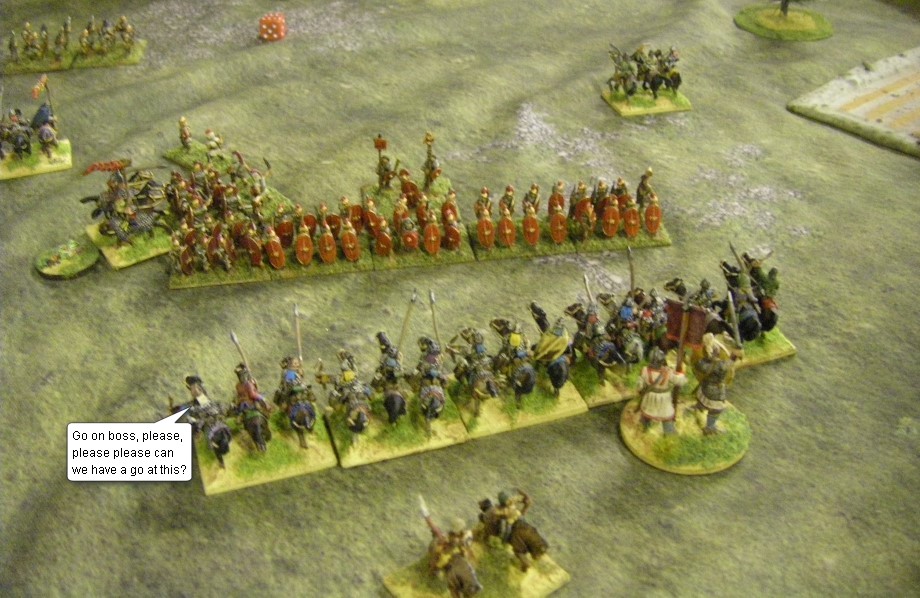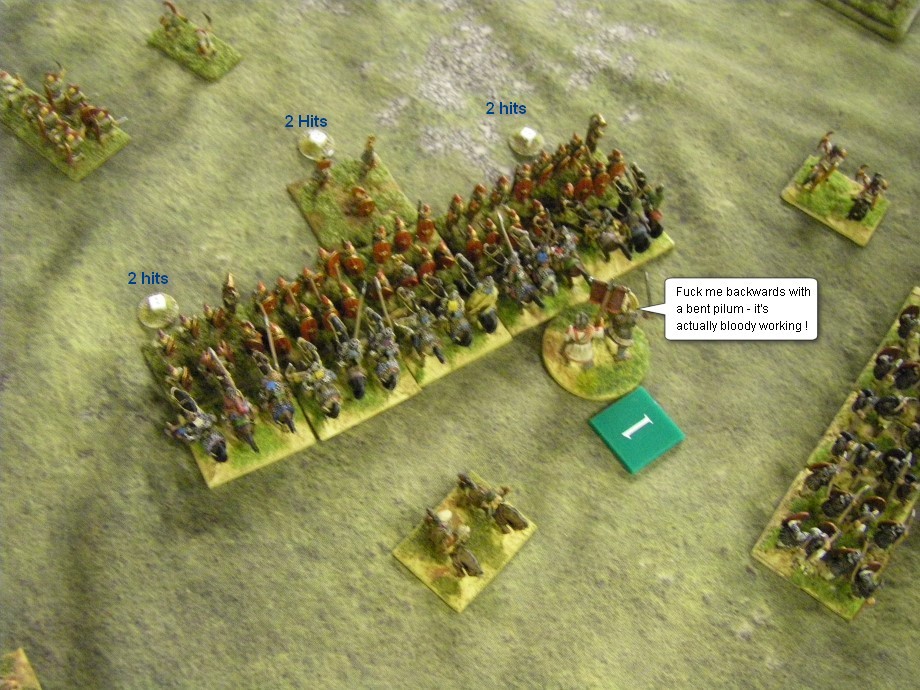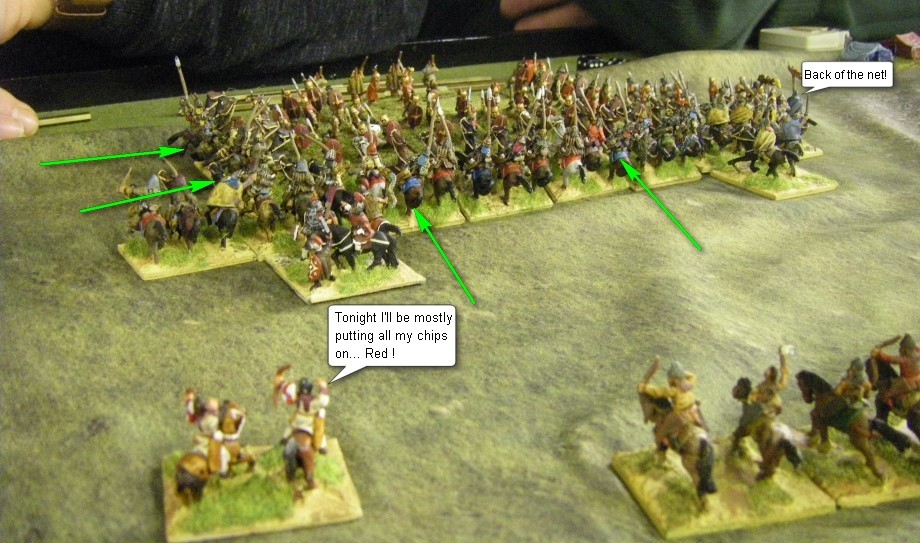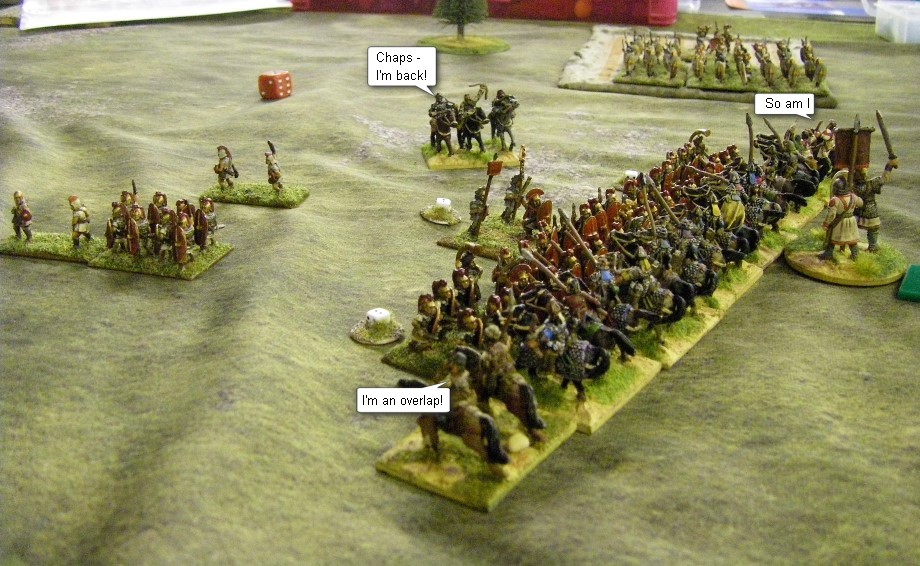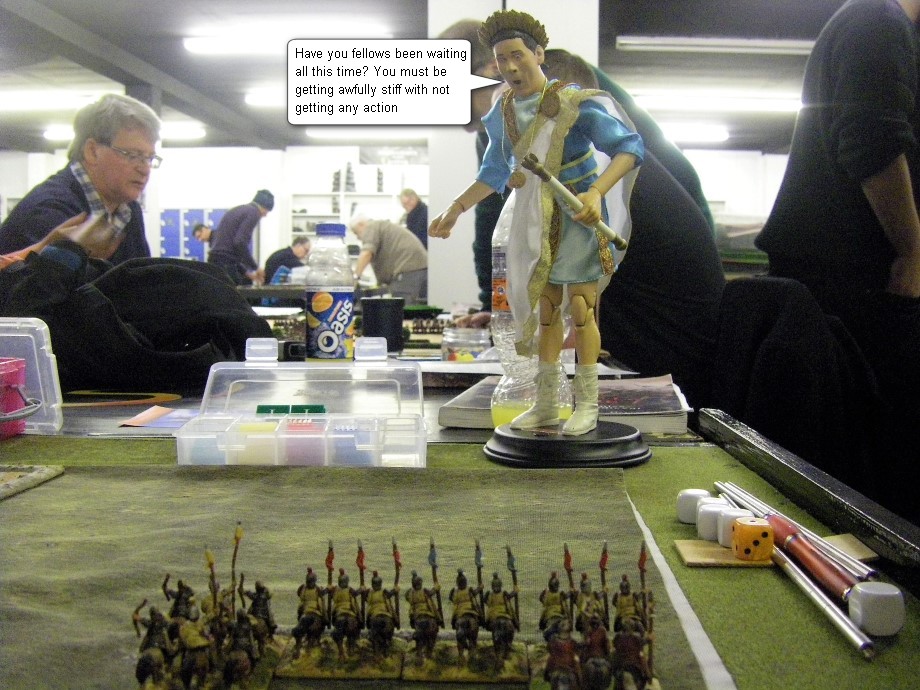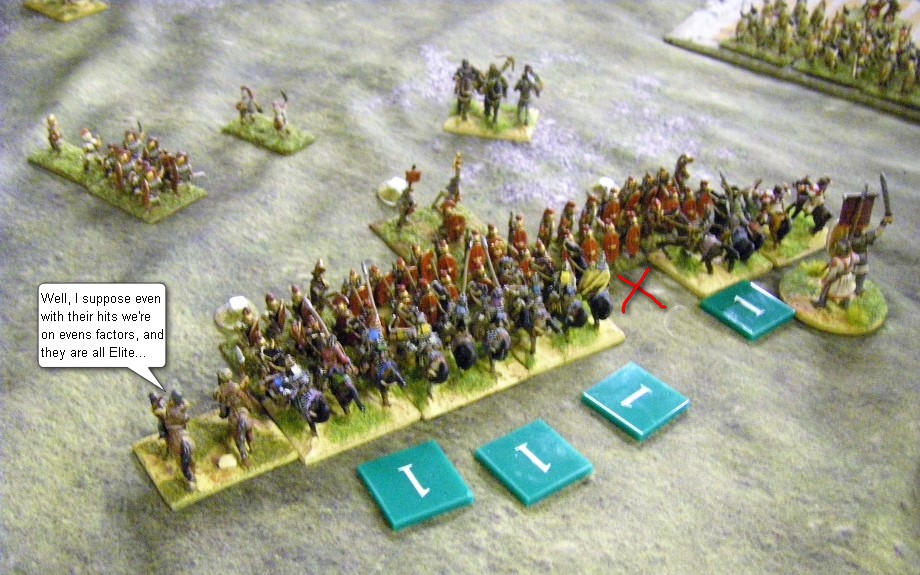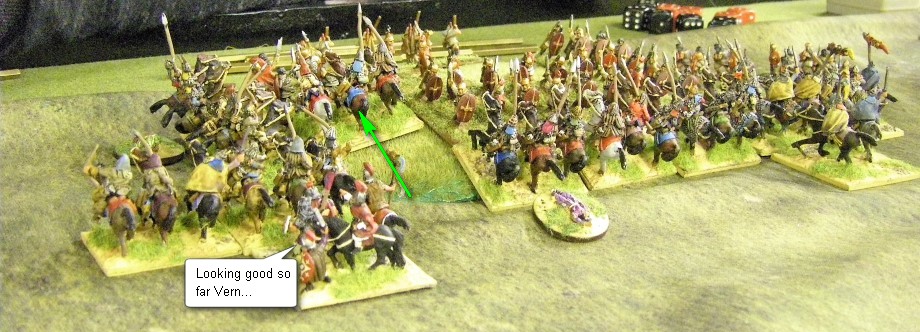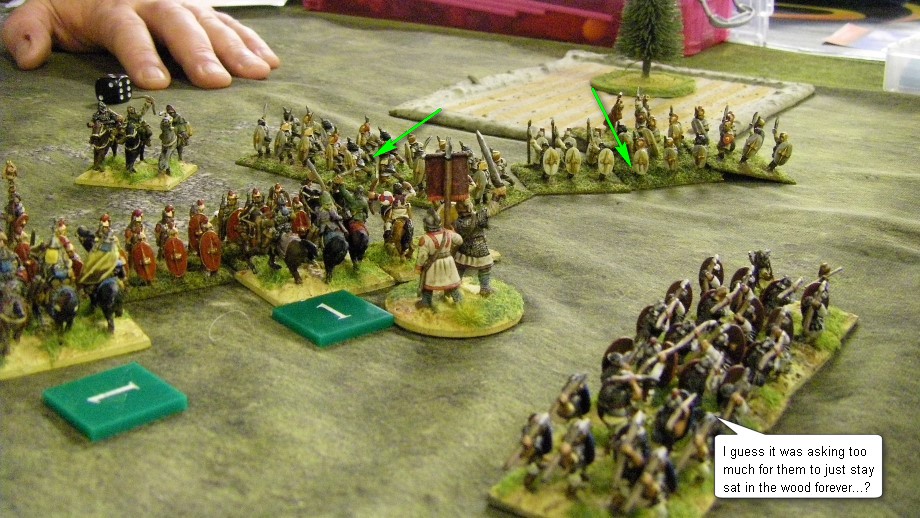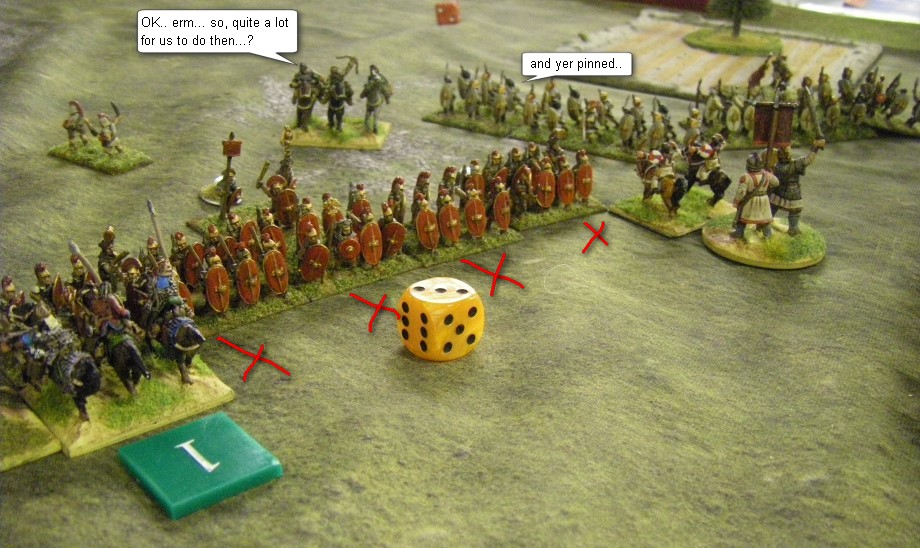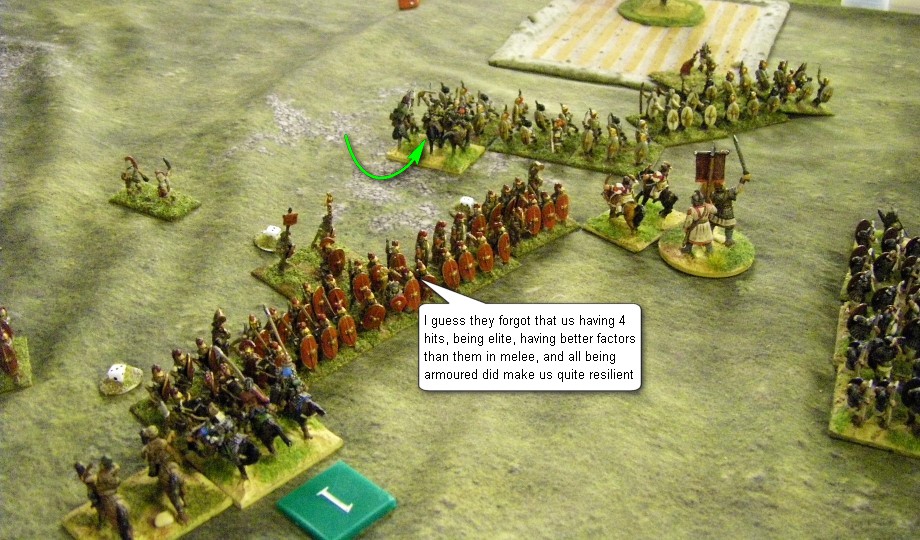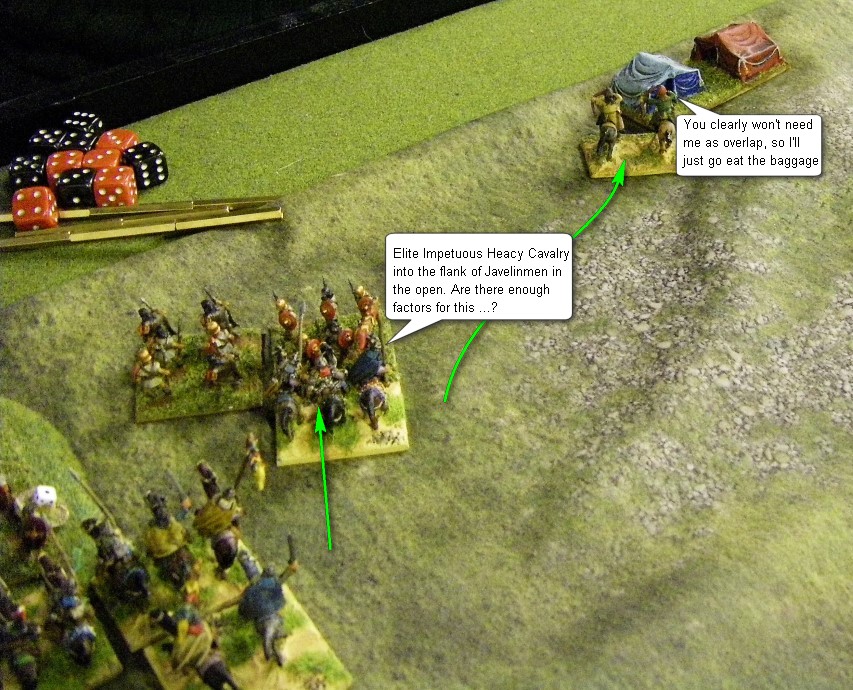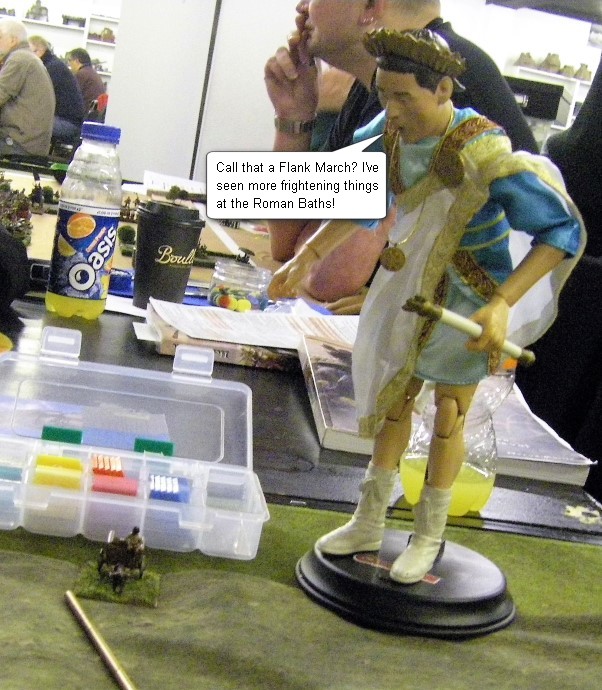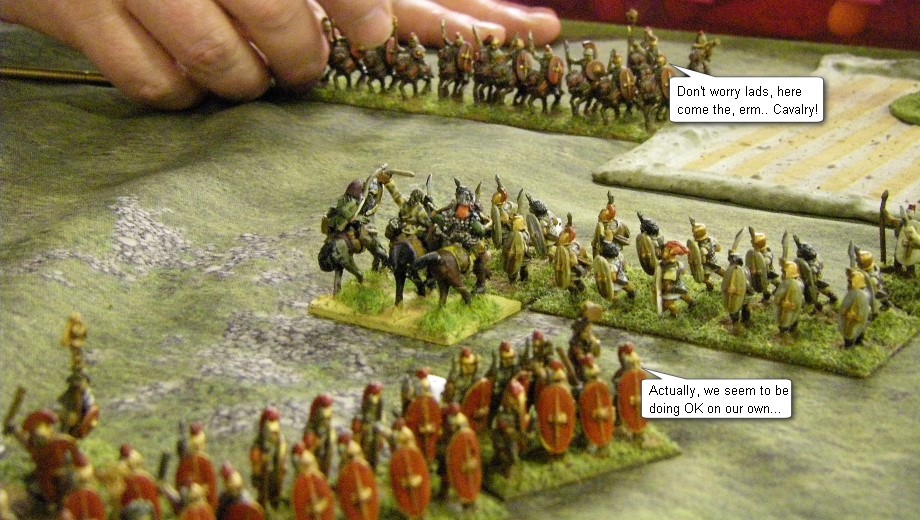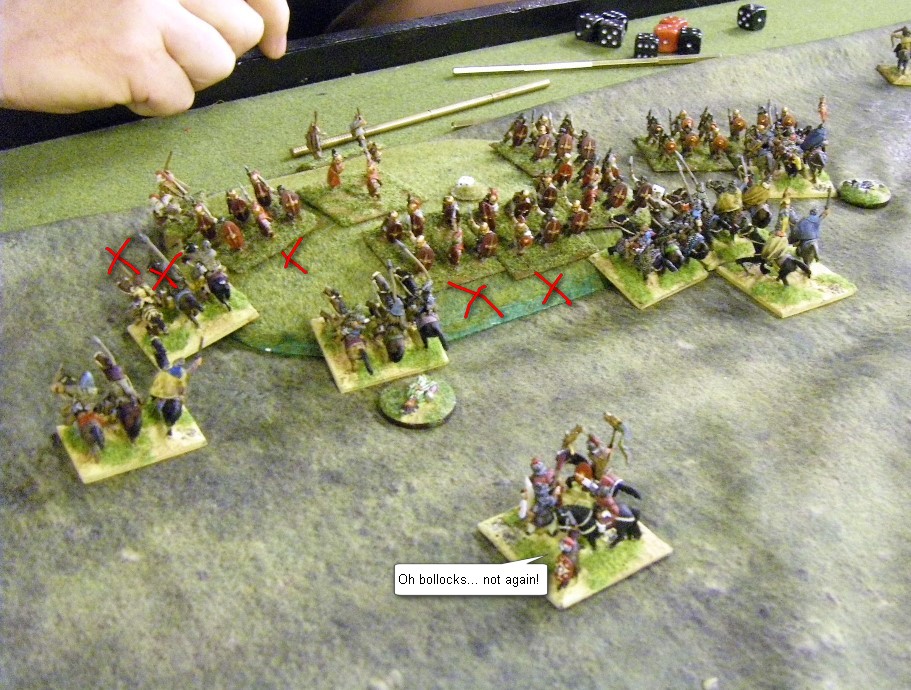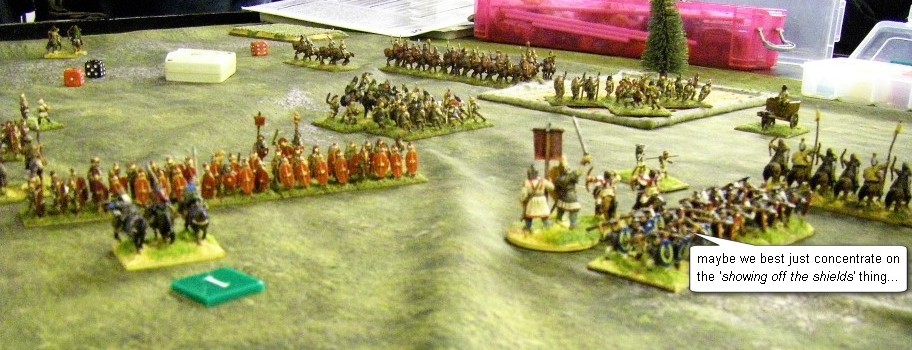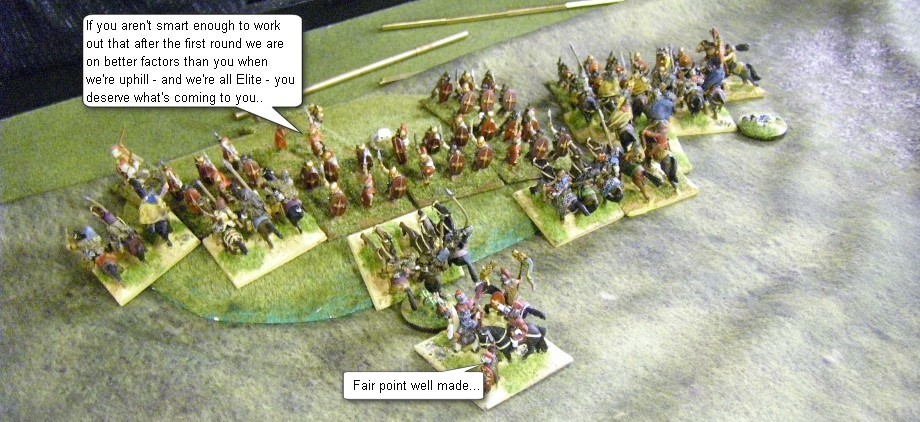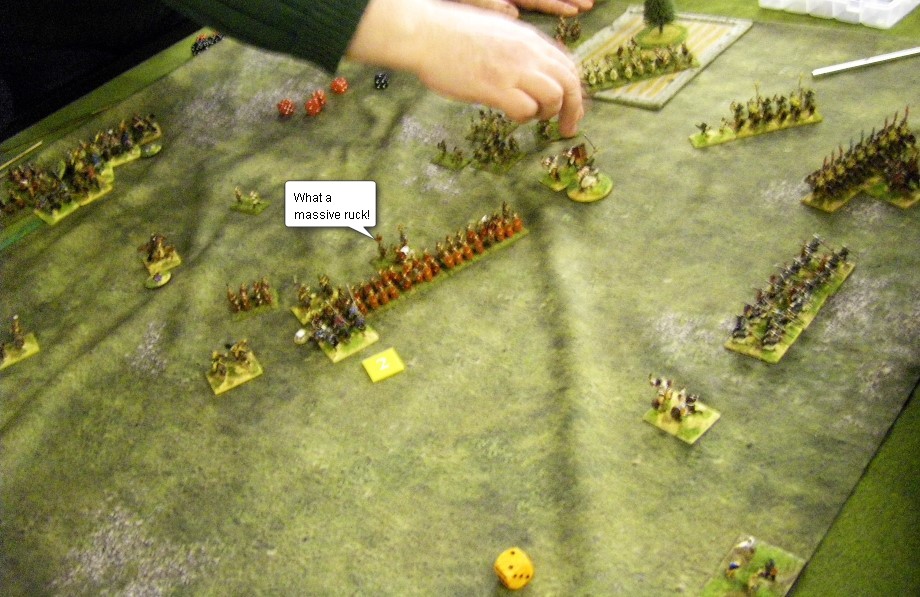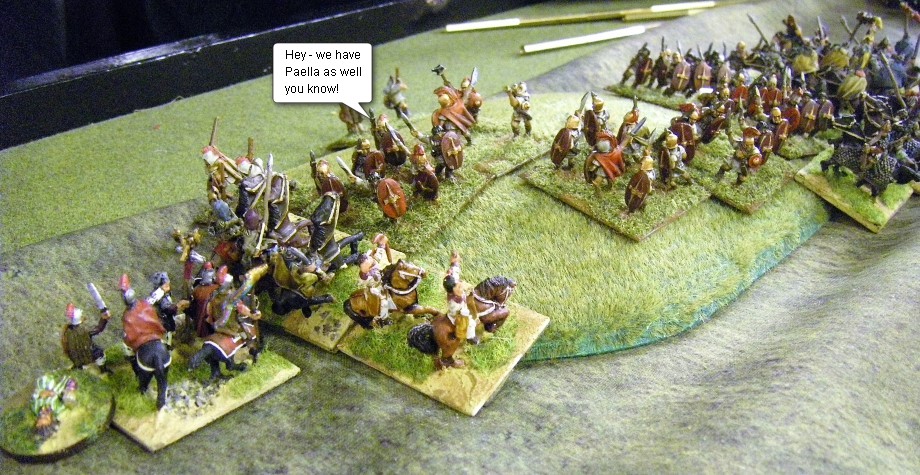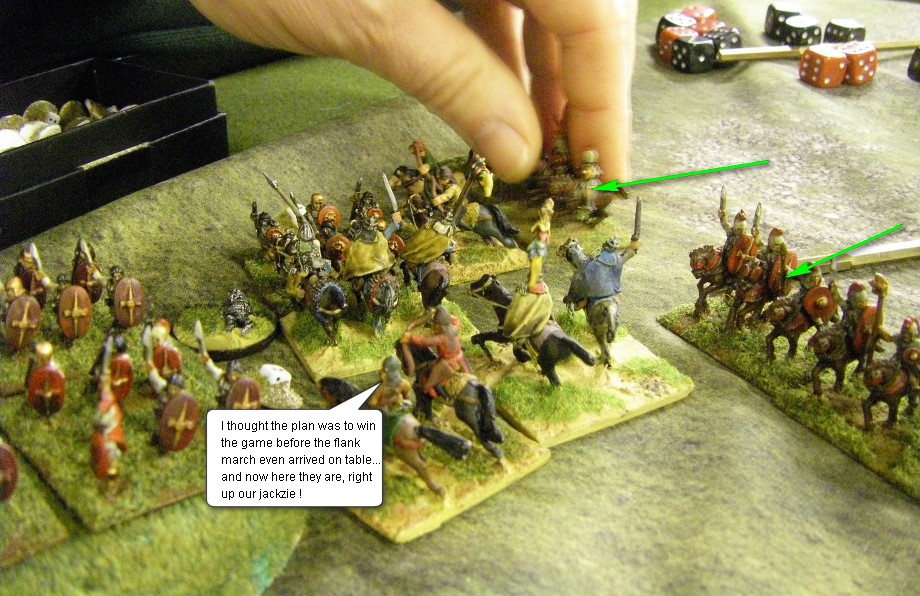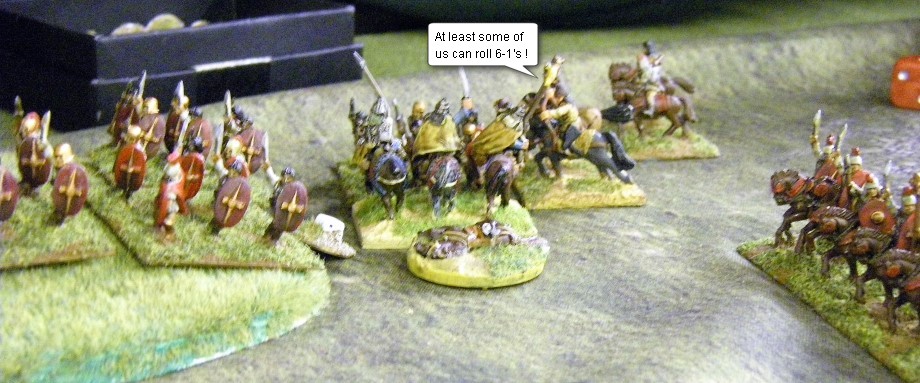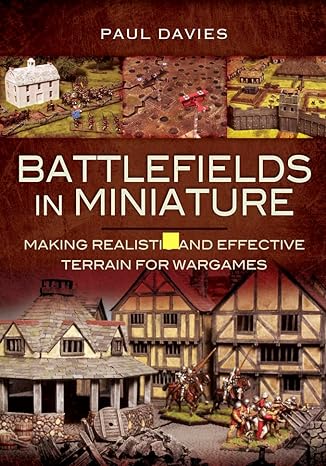Classical & Roman at Godendag 2018
Patrician Roman vs Ancient Spanish
Game 1 Patrician Roman vs Warring States Chinese
Game 2 Patrician Roman vs Frankish
Game 3 Patrician Roman vs Ancient Spanish
Game 4 Patrician Roman vs Palymran
The Saturday night passed relatively without incident, as with the barely beskirted, oft-puking masses thronging Cardiff's main drag were negotiated as successfully as the 16-meat-menu in the decidedly non-currytastic Brazilian Rodizio where us foreigners ate and took shelter from the rain (not in that order).
A few more pints of hipster ale rounded out the evening before taking to bed as it appeared the night was just beginning for the vowel-free stumblers queuing for the nightclubs across the road from my hotel.
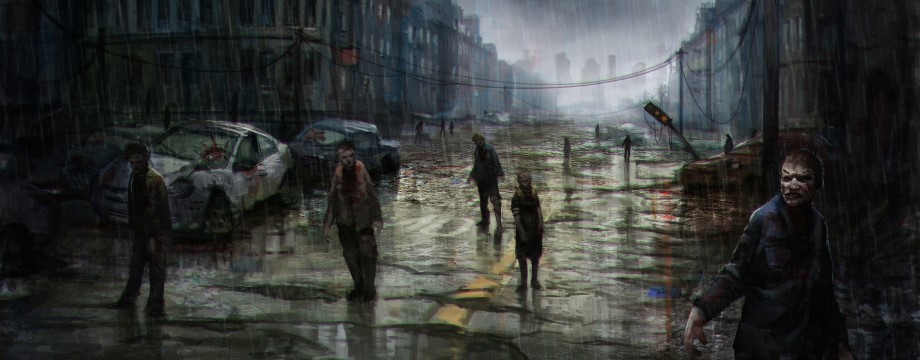
The next day the wintery Cardiff morning dawned like a pint of Guinness - dark, wet and firmly possessed of a sense of its own location in the Celtic pantheon.
With a defeat and a near defeat we had already given up looking at the table, and so focused our attentions on the opposition - Sertorius' Spanish, an army rarely seen outside lovers of Corvus Belli figures and flaming Ox carts. The lists for the Patrician Roman and Ancient Spanish from this game, as well as all the other lists from the games at Godendag can be seen here in the L'Art de la Guerre Wiki.
Having dissected the previous days debacles over local ales and South American cuts of cheap beef of unknown provenance the previous evening we had the inklings of a different plan. Principally this meant that it was our intention to defend this time, and in so doing seek deny our opponents the 5th terrain piece and the chance at adding a near-impassable village to their roster of table clutterage. This task we achieved with some aplomb, also rolling two 6's to remove 2 enormous rough patches from the middle of the table leaving the Spaniards with a near-bald playing surface on which their Lusitanian Scutarii would no doubt tremble in medium foot shaped fear at the approach of our mounted tide. |
L'Art de la Guerre hint - Deploying each command second and moving first, the option of "attacking" is a seductive and seemingly no-brainer one for most wargamers coming to ADLG. However, as we had proved in the previous games the countervailing argument for being the defender is by no means as inferior as it first appears.
Defending means:
The other factor is that with the narrow (not 4 foot) table size and 40mm movement distances of ADLG, even moving second still enables a determined army to have a realistic opportunity to drive an enemy skirmish screen back off the far side of the table. All in all the choice to attack or defend is much more balanced than it might appear - irrespective of whether your army craves terrain or loathes it.
The end result was a table as bereft of terrain as the legs of the girls down from the valleys the previous night had been bereft of clothing - but unlike those hardy specimens, the Spanish were visibly trembling as they took to the field of battle.
Two large blocks of Elite Lusitanian Scutarii flanked a formation of full-fat Legionaries as the Iberians clustered nervously into one corner of the table - a fourth command missing and no doubt sent on a flank march to our right. Our army was arrayed across the open plain and was already on the march forward.
Kenneth was preparing one of his many "shocked" expressions as he awaited the arrival of the flank march, against which Aetius mixed-bag command was deployed. The possible arrival of the enemy on this side would however prevent us sending Aetius' Auxilia too far into the plantation as they would risk being swept from the field by its arrival.
With the Alans firmly in play this time (thankfully Lord Partridge of Norwich hd again decided to lead his men forwards) and all 4 commands on table the Romans currently enjoyed a material advantage in capability. The plan was clear - pin the enemy Legions with Aetius' cavalry, and sweep past them with the Alans and the 7-strong Medium Cavalry command, turning their flank and piling into the Scutarii command at the back of the table to try and ratchet up a game-winning number of casualties before the flank march could arrive.
Lusitanian Rebellions
The lines of Foederate cavalry raced forward, hooves clattering on the tabletop like angrily-hurled dice as the screening Alan Light Horse intimidated the handful of Spanish skirmishing foot to get out of the way.
The smaller, "regular Roman" mounted command seemed surplus to requirements on the far left flank and was quickly reassigned to the right to respond to the well-telegraphed flank march and potentially support Aetius cavalry against the Legions as well. The Legions themselves had drifted to the left, butting up against the terrain into which the third Spanish command had safely inserted pretty much all of its 8 Lusitanians.
The Lusitanians shouted abuse from the plantation at the by-now retreating Roman Auxilia, who had learned their lesson from the first game about going into wooded areas against more numerous and better quality foes. This flank looked like an Iberian Standoff, with the Spaniards unkeen to emerge from the woods with Foederate lancers in play, and the Romans themselves not particularly interested in committing against Sertorius' Legions until their comrades had sailed past the Legions flank and torn a hole in the more squishy elements of the Spanish army to the Legions right. |
L'Art de la Guerre hint - Impetuous mounted troops do not have to charge against steady Heavy Infantry, nor against enemies who are in terrain which would disorder the mounted troops in combat.
In this situation therefore, neither the Legions nor the tree-hugging Lusitanians therefore will trigger an unprovoked charge making it much easier and less pip-intensive for Aetius to control his barbarian horsemen.
The Alans were now starting to get past the end of the Legionary line, pressing forward into a gap seemingly only defended by Javelinmen and skirmishing Light Foot - or, in Alan Heavy Cavarly terminology, "targets". Sertorius himself was looking on nervously from the top of a nearby gentle hill on the Spanish base edge.
With every turn the Spanish flank march failed to arrive the Regular Roman mounted command was making more ground across the table to be ready to greet them. They exchanged pleasantries with the passing Auxilia as they expanded out into battle formation line abreast.
Lusitanian Hilltop Fortress Viewpoint
Spain's Legions had inched forward as they sought to tempt the Foederate cavalry into a rash charge - but in so doing they had become disconnected from the terrain anchoring their left flank, opening up a gap into which a lone unit of Foederate Cavalry now charged, catching 2 units of Light Foot in their evade and thus removing them from the table at a stroke, and positioning the ravenous cavalry intriguingly behind the Legions rear.
Rules hint - if "proper" battle troops catch evading LF, the LF are simply removed. There is no dice rolling or combat. This usually keeps skirmishing LF honest!
The Alans and the Foederate Cavalry on the Roman left were now rapidly closing in on Sertorius' position. Naked fear had inspired the Javelinmen to evade away successfully from the first rush forward of the Alans, who by now had easy prey, flanks and an enemy camp well enough in their sights. With one unit of Alans already tasked with disrupting the Spanish Legionaries line the rest of the mounted horde swept on towards the wargaming worlds most tempting target, Medium Foot in The Open, arrayed before them.
The Spanish had no answer but to sit and wait as the Foederate cavalry peeled off and teed themselves up for a series of devastating flanking attacks on the hilltop. Sertorius was struggling to prevent his men from running away as they slid nervously around on the slightly too steep to place bases on hillock.
Aetius' Foederate cavalry were now also seemingly well positioned, with units behind the Spanihs Legions flanks, and enough Light Horse floating in the general area to give them overlaps at both ends of the line as well. A charge into the Legions was clearly tempting, and with the Spanish flank march still off table and the Alans and other cavalry looking set to wreak havoc on the hillock, perhaps now was the time to charge home and seek to tip the currently under-sized Spanish force past its on-table break point A question lingered in the air... Was this a potentially game-winningly good idea...? |
 |
The Spanish Legions however made that decision for the proper Romans, charging home into the rather surprised Foederate cavalry - not changing the first round factors and denying the Romans the opportunity to bring in overlaps was clearly a smart move, but it also took the Legionary line further away from the unit to their rear as well. Would fortune favour the brave ..?
Not really... the Foederate Cavalry this time were clearly keen to atone for their debacle in the previous game and out-diced the mock-Romans in some style, winning 3 of the 5 combats and suffering the extra losses that come with "Furious Charge" to boot whilst only inflicting one minor injury to a lone unit of Foederates. The plan might well be working....

"Infamy, Infamy.." |
In the Romans next turn the screw was tightened even further on the Spanish on-table army, with a phenomenal amount of horse-based firepower concentrated on Sertorius' uphill bastion. Too many lancers to actually fit into combat slammed into the quivering mass of Spanish infantry from all sides as the Goths and Alans coordinated their charges up the hill. Advantage of ground gave the Spaniards a fighting chance by evening up the initial factor, and their Superiority would also help - but with the Armoured Elite Alans in combat, with flanks conceded everywhere, and the prospect of double-hit minimum damage on the 3-hit Mediums the odds were still very much with the Romans.. |
What Might Happen Here?

This shows the range of outcomes of a combat in which Elite troops fight Elite opponents on even factors, but with one side also having Armour to mitigate any narrow losses - the starting point for some (but not all) of these combats with the Alans on the right having Armour and being Elite. Darker squares show more hits being inflicted, with the opponents rolls and "wins" shown on the right side of the chart.
In a head-on fair fight the odds are with the Alans, who should win 14 times out of 36, and draw 14 times, losing just 8 times. However, each win for the Alans will also inflict an extra cohesion loss dur to Furious Charge. Adding this in, over the course of 36 combats the Impetuous Alans should expect to inflict 29 hits and the Spanish 9 hits.

This shows the range of outcomes of a combat in which Average troops fight Elite opponents on even factors, which is the case for many of the rest of the Foederate Cavalry.
In a head-on fair fight the odds are with the Spaniards, who should win 18 times out of 36, and draw 6 times, losing just 12 times. However, each win for the cavalry at Impact will also inflict an extra cohesion loss due to Furious Charge. Adding this in, over the course of 36 combats the Impetuous Foederate Cavalry should expect to inflict 27 hits and the Spanish 26 hits. The Foederate Cavalry also enjoy a number of overlaps in this matchup as well, tipping the odds firmly in their favour overall.
With Sertorius' Legions now locked in combat, the returning Foederate unit had a vast choice of targets to aim for in its next turn. The Legionary island was now swimming in a soup of hairy horsemen as overlapping LH moved up to help seal the Legions fate.
Kenneth continued to be amazed that the flank march had failed to arrive, and the Regular Roman command started to wonder if they could spare some men to go and take part in the actual victory stuff that was happening across the rest of the table while they sat idly waiting for something that might not come to pass...
Iberian Swords
But suddenly, seemingly out of nowhere, the Sertorian Legions found their mojo! Unsheathing their gladiuses and smiting mighty blows against the Foederate horses the mock-Romans cleaved through their opponents armour and inflicted a turn of devastating damage on the seemingly already victorious barbarian horsemen. Quite what had inspired this resurgence was as unknowable as how the long-dead but resurgent Welsh language comes up with words for 'mobile phone' and "anabolic steroids", but whatever it was the Foederate horse were certainly feeling its effects.
What Happened Here?

In the combats where the Elite Heavy Infantry Legionaries have survived the initial Impact phase unscathed, they will be at +1 in the next round of combat - and these are the odds and outcomes of those fights where Armoured Elite Legions take on Armoured Average Foederate Cavalry. Darker squares show more hits being inflicted, with the Legions rolls and "wins" shown on the right side of the chart.
Over the course of 36 combats the Legions should expect to win 24 times and the Foederate Cavalry just 10. Winning at Impact, or getting overlaps is therefore pretty dammed vital for the Foederate horsemen!
On the hillock, Sertorius' himself was not faring especially well. The initial charge of the Foederates and Alans had ripped a hole straight through the middle of his lines, leaving him embedded in a Caltiberian unit which now found itself hit from tow directions by enemy horse. The Alans had failed to make an initial breakthrough however, but with overlaps and their commander at risk an imminent dissolution of the Spanish formation was clearly in prospect
With their Legionaries now giving the Foederate cavalry a right pasting, the other Celiberian command suddenly found the self-confidence to emerge blinking and spluttering from the protection of the plantation in which they had been skulking. Their reappearance prompted Rome's own Auxilia to turn about and consider whether they might now actually be needed to participate in what had until only moments ago seems a likely and fairly routine victory.
L'Art de la Guerre hint - Rolling 3's or less is usually quite bad. Especially against Elite troops, who will add +1 to any roll of their own below 4. |
The Foederate cavalry's Game 2 inability to roll above a 3 had now returned with a vengeance, and they evaporated with almost no further fuss against the resurgent Spanish Legions. The Auxilia may well be needed to fight... |
L'Art de la Guerre In Spanish: Esta muerto - "he is dead" |
With the Roman presence on this side of the board disappearing faster than a patch of clear blue sky on a January Cardiff afternoon, the well-positioned remaining Foederate cavalry unit quickly realised that his appointed role as rear attacked into the Legions was perhaps not the best use of his time. Instead he headed for the Medium Foot in the Open behind him, seeking to do some damage before he was overwhelmed by sheer weight of numbers.
The Alans were, surprisingly, making little headway against the uphill Lusitanian warriors but a more tempting target was to preset itself - the flank of a unit of Javelinemen in the open. The Alan commander (called Alan..) sent one of his spare units off on a pedestrian hunting mission, but the Spaniards were having none of it. Out-dicing the charging cavalry they held firm against the 3-0 initial combat and then turned to face their stunned opponents in the next turn.
Then, the Spanish flank march arrived. A mess of cavalry trundled onto their own side of the table, safe behind the Plantation, and a lone burning cart appeared on the Roman right, much to the distain of Kenneth Williams and the waiting Roman cavalry command.
The Roman Commander Speaks
As the enemy flank march moved up, the last of Aetius' Foederate cavalry was making heavy going of trying to run down Medium Foot in the Open.
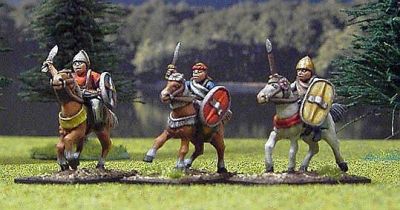 |
Sertorius himself however was having a much better time of it. Shrugging off the flanking attacks in a display of exceptional dice rolling his unit was taking on all comers from all angles and throwing them bodily off the hillock. |
Since the initial round of combat the 10 Alan and Foederate lancers had pretty much failed to inflict a single additional hit on any of the Lusitanian warriors, and had suffered material attritional losses themselves. |
With the remnants of his cutting edge mounted strike force in tatters, Aetius was again contemplating the possibility of an ignominious retreat from the enemy shepherded by a LF skirmisher. The baleful and randomly dangerous presence of the flaming Ox-cart only added to his sense of dread and melancholy as the balance of forces on this part of the board swung dramatically in favour of Spain. |

"Infamy, Infamy.." |
Back at the hillock, the Roman mercenaries continued to fall back and charge home in repeated waves of attacks - but nothing could seemingly dent the morale and resilience of Sertorius and his Lusitanians in their hilltop fortress, as they shrugged off and repulsed attack after attack, charge after charge. Even the Javelinemen, without the benefit of the hill or Elite status refused to conform to the law of averages as they repeatedly repulsed - and even damaged - the Alan nobility in a display of outrageous odds-beating ferocity.
With little left to hope to achieve, Aetius last dregs attempted to damage the wall of mock-Roman legionary toughness with a coordinated series of attacks. But surely this was a mere sideshow to a battle that should by now have been well and truly won with the Alans sweeping the Lusitanians from the hill in the far distance?
The Spanish had now lost their camp, but the Roman army had lost possession of almost the entire field, outmanoeuvred and out fought by a near-static line of heavy infantry who had shrugged off attacks from all sides in their relentless advance down table.
A Roman Town in Spain
Sertorius was still fighting like a daemon, refusing to yield an inch to the increasingly despairing Roman commander as he ordered his barbarian mercenaries forward yet again to make what surely must be the one attack where the dice gods would favour the men from the land of pasta and pizza not the men from the land of tapas and, erm, more tapas?
Even the Javelinmen were still fighting hard, punching well above their weight and hanging on against the Alannic nobility. They had in fact managed to hang on so long that the Spanish flank march had now managed to make its way across nigh on a full third of the table to arrive, on their own side, and slam into the rear of the Alans !
This was the final straw. With the Foederate cavalry that remained now bloodied, battered and repulsed in all of their seemingly well-omened strategies and assaults, the jubilant Spaniards inflicted the final hits required to tip the Roman army to defeat.
The Result is a decisive defeat.
Click here for the report of the next game in this competition, or read on for the post match summaries from the Generals involved, as well as another episode of legendary expert analysis from Hannibal
Post Match Summary from the Patrician Roman Commander
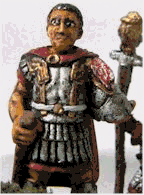 How outrageous are the dogs of poor fortune, who hound me like, erm, hounds and tug at my coat tails as they drag me into a pit of merciless gloom!
How outrageous are the dogs of poor fortune, who hound me like, erm, hounds and tug at my coat tails as they drag me into a pit of merciless gloom!
The table was perfectly poised for my men to sweep majestically across the uneven and a little lumpy at times open plain and thunder into the quivering mass of the enemy, both frontally and in the buttock-related areas as well, but that seemingly brilliant plan came to naught as the Gods looked unfavourably on me yet again.
Woe, woe, woes and thrice times more woe is me - a proper Woe-man, descendant or Womulus and Wemus no doubt could have done no more to set myself and my army up for victory. These invidious and perfidious Spanish rebels have thrown off the civilizing yoke of the most glorious empire the world has ever seen and now will be scrabbling in the dust without our input, which will serve them jolly well right!
Hannibal's Post Match Analysis
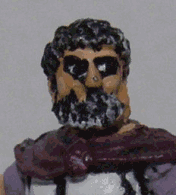 You sir are a blithering idiot of the highest order. I can see that there is some sport in bringing an army that is more likely to finish second in the style of Jimmy White instead of winning like Steve Davis, but here you threw away all of your manifest advantages on this open plain in the pursuit of the spectacular success you so clearly crave but so richly fail to deserve.
You sir are a blithering idiot of the highest order. I can see that there is some sport in bringing an army that is more likely to finish second in the style of Jimmy White instead of winning like Steve Davis, but here you threw away all of your manifest advantages on this open plain in the pursuit of the spectacular success you so clearly crave but so richly fail to deserve.
Quite how almost your entire cavalry force managed to outflank a block of 5 Legionary maniples, and then failed to turn that incredible positional advantage into a winning flank charge on them is utterly beyond me. Instead the host of charging horsemen just sailed on into the sunset, intent on throwing away an unmissable opportunity to roll up the enemy's Roman legions in exchange for a chance to take on Superior troops with your Average ones at even factors!
I cannot begin to fathom why you would rush towards a combat at which you were disadvantaged, but then to this incompetence you then added the icing on the cake - yet another frontal charge against better armoured, better class Heavy Infantry. Repeating the same mistakes is always a risk with so many games in a season, but repeating them in the game immediately after your previous debacle - and this time adding enemy Armour to the list of things that you were disadvantaged by - is stunning in the extreme./p>
Yet again you made the classic ADLG mistakes - coming up with a half-decent plan and then failing to execute it rigorously enough, and getting your battle management and timing entirely wrong to boot. Sertorius was never coming off that hill in a million years - so why not concentrate all your attention on outflanking and then overrunning the Legions first, and then either moving onto the assault the hill with even more care and planning, or even waiting to annihilate the flank march, which clearly was a handful of half-witted cavalry far weaker than anything in your force.
This has been a chastening weekend so far. Let's see if it continues into the next game
Click here for the report of the next game in this competition
You may also like....
Game 1 Patrician Roman vs Warring States Chinese
Game 2 Patrician Roman vs Frankish
Game 3 Patrician Roman vs Ancient Spanish
Game 4 Patrician Roman vs Palymran
View My Stats for My Match Reports Pages


